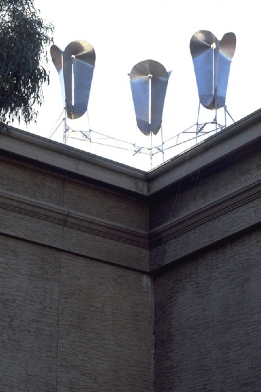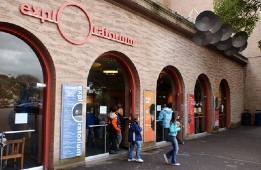| people it isn't annoying and I think that is one of the reasons why they behave so nicely. The fact that we aren't rigid about people's behavior helps." |  | ||||
 | |||||
| "At one point, I thought I knew where the entrance was going to be -- on the West side. But people also kept coming in through the North door too. And then we wanted to open up the East door so people could see Maybeck's beautiful rotunda. So now we have three entrances with three separate ticket takers. Otherwise we would have made everybody take long hikes to get in just because we had some idea about where they should enter. It seems that an awful lot of things are decided because it's something that I'd like to happen to me." So you rely on personal intuition? "That's right. I can remember working with an artist named Doug Hollis, who was an artist-in-residence at the Exploratorium. It was his first attempt at building a wind harp and I spent a lot of time with him just doing odd experiments, seeing how one could transmit sound along wires and along rods and how to couple it. I think I sort of taught him to explore more. He thought he knew exactly what he was going to do. Only it never works out too well that way. So we took time off to do this kind of fiddling around with all kinds of things. It was great fun and he has now become entranced with such fiddling." | |||||
The Aeolean Harp by artist Doug Hollis on the roof of the Exploratorium | |||||
| I always knew that physicists fiddled a lot, and that people at the Exploratorium fiddled a lot. But I didn't know that you were fiddling around with aesthetics in creating the museum. Do you think that other museums do enough of this fiddling? "I know that they are interested in the aesthetic result, yet they seem to want to impose something on people rather than make it possible for people to make their own decisions. Like the Guggenheim Museum in New York." You don't enjoy walking through the Guggenheim? "I don't know, because you can't make any decisions." | |||||